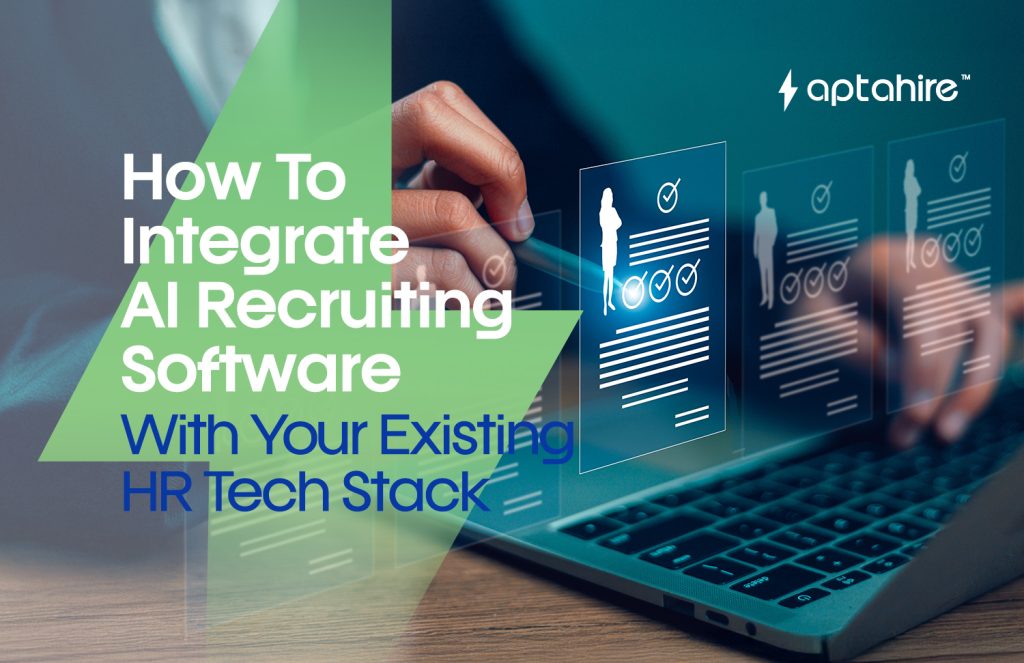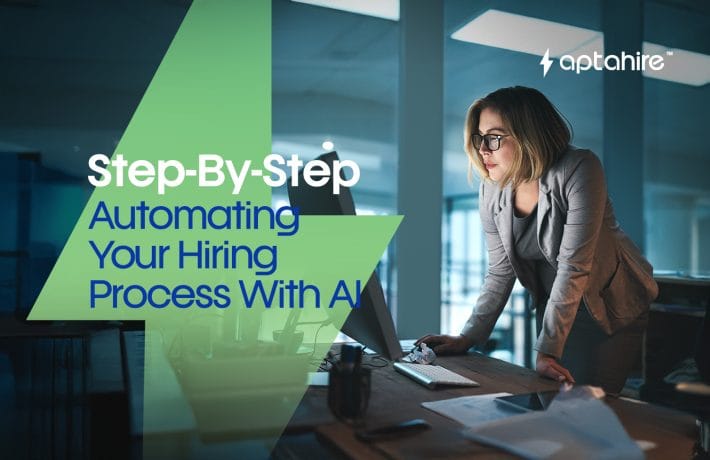How to Integrate AI Recruiting Software with Your Existing HR Tech Stack

Let’s face it: the modern hiring space is evolving at lightning speed.
Gone are the days when HR teams sifted through towering piles of resumes manually. Today, artificial intelligence (AI) is redefining how companies find, evaluate, and hire top talent. But here’s the catch: adopting AI recruiting software is only half the battle. The real challenge? Seamlessly integrating it with your existing HR tech stack.
Whether you’re a seasoned HR professional or just beginning your digital transformation journey, this blog is your roadmap to building a smarter, faster, and more efficient hiring machine using AI.
Why Integration Matters
Let’s start with the basics. Your HR tech stack likely includes:
- An ATS (Applicant Tracking System)
- HRIS (Human Resource Information System)
- Payroll tools
- Learning & Development platforms
- Onboarding tools
Now, throwing AI recruiting software into the mix without integration is like buying a new smart speaker and forgetting to connect it to Wi-Fi. It might look good, but it’s not doing much.
When integrated correctly, AI recruiting tools can:
- Streamline candidate sourcing and screening
- Auto-score and rank applicants
- Provide predictive hiring insights
- Improve collaboration between recruiters and hiring managers
- Offer a smooth and unified experience for both candidates and recruiters
Step 1: Audit Your Existing HR Tech Stack
Before you bring AI into your hiring process, take stock of what you already have.
Ask:
- What tools are we currently using for recruiting, onboarding, and HR management?
- Which ones are underperforming or creating bottlenecks?
- Are there any tools that don’t talk to each other?
Create a map of your current tech stack, including:
- Key functions (e.g., job posting, screening, interview scheduling)
- Software providers
- Data flow between systems
- User roles and access levels
This clarity will help you identify where AI can make the biggest impact, and where integration is most crucial.
Step 2: Choose the Right AI Recruiting Software
Not all AI tools are created equal. Some are all-in-one solutions. Others are designed to complement your existing systems.
Here’s what to look for:
1. Compatibility:
- Does the tool integrate with your current ATS, HRIS, or CRM?
- Are there native integrations or will it require APIs?
2. Core Features:
- Resume parsing
- Automated screening
- Video interview analysis
- Predictive analytics
- Chatbots for candidate communication
3. User Experience:
- Is it easy for recruiters and hiring managers to use?
- Is the candidate experience seamless?
4. Vendor Support:
- Do they offer implementation assistance?
- How responsive is their support team?
Pro tip: Involve your IT team in this stage to ensure the tool aligns with your company’s security and compliance standards.
Step 3: Plan the Integration Strategy
Integration isn’t a plug-and-play process. It requires a thoughtful strategy.
Start by:
- Defining clear goals: Are you trying to reduce time-to-hire? Improve quality of hire? Eliminate bias?
- Identifying integration points: For example, syncing candidate data from AI software to your ATS.
- Creating a data flow plan: Decide what data needs to move between systems and how often.
- Designating stakeholders: Include HR leaders, IT, hiring managers, and the AI vendor.
Use the RACI model (Responsible, Accountable, Consulted, Informed) to clarify roles and avoid confusion during implementation.
Step 4: Leverage APIs and Middleware
APIs (Application Programming Interfaces) are the bridges that connect your tools.
If your AI recruiting software has native integrations (e.g., with Workday, BambooHR, Greenhouse, Lever), great! Use them.
If not, you may need to:
- Work with developers to build custom APIs
- Use middleware platforms like Zapier, Workato, or Tray.io to create automation workflows
These integrations help data flow freely between tools, reducing manual entry and increasing efficiency.
Example: When a candidate completes an AI-screened video interview, their score and profile can automatically appear in your ATS profile, triggering the next step (e.g., scheduling an interview).
Step 5: Prioritize Data Consistency and Compliance
One of the biggest challenges in integration is data.
Make sure:
- Candidate data is standardized across systems (e.g., consistent labels for job titles, stages, etc.)
- Duplicate profiles are avoided through data syncing
- Privacy laws (like GDPR or CCPA) are followed
Your AI vendor should offer tools to:
- Anonymize data for bias reduction
- Log consent from candidates
- Enable data deletion upon request
Data privacy isn’t just about compliance, it’s about building trust with your candidates.
Step 6: Train Your Team
Even the best AI tool won’t work unless your team knows how to use it.
Create a training program that covers:
- How AI fits into the hiring workflow
- How to interpret AI-generated scores or recommendations
- How to escalate exceptions or technical issues
- What AI can, and can’t, do (it should assist, not replace human judgment)
Offer hands-on demos, video tutorials, and live Q&A sessions.
Change management is key. Some recruiters may fear AI is replacing their role. Clarify that it’s here to remove grunt work, so they can focus on strategic hiring decisions.
Step 7: Test, Optimize, and Scale
Don’t go live with the whole system at once. Start with a pilot program:
- Choose one department or job role to test the integration.
- Monitor the process: Are candidates flowing smoothly from AI to ATS?
- Collect feedback from recruiters and candidates.
Use insights to:
- Tweak workflows
- Fix integration bugs
- Refine the scoring model
Once stable, roll out the integrated system across teams and departments.
Step 8: Measure Success with the Right KPIs
You’ll want to prove that the integration isn’t just working, it’s driving results.
Track:
- Time-to-hire: How much faster are you hiring now?
- Quality of hire: Are new hires staying longer or performing better?
- Candidate experience: Are drop-off rates decreasing?
- Recruiter productivity: Are they spending less time on screening and more on interviews?
Use dashboards or analytics tools (like Tableau or Power BI) to visualize impact.
Common Pitfalls to Avoid
- Overcomplicating integration: You don’t need to connect everything at once. Focus on high-impact areas first.
- Ignoring user feedback: Listen to what recruiters and candidates are saying during rollout. Their input is gold.
- Forgetting mobile optimization: Ensure the AI tools work smoothly on smartphones, many candidates apply via mobile.
- Not involving IT early enough: They’ll help avoid technical hiccups and security gaps.
Final Thoughts: Integration is the Key to AI Hiring Success
AI recruitment is no longer optional; it’s becoming the standard.
But throwing AI into your hiring process without integrating it into your existing tech stack is like buying a self-driving car and never turning on autopilot.
The magic happens when:
- AI works in sync with your ATS, HRIS, and collaboration tools.
- Data flows cleanly and securely.
- Your team embraces automation to focus on what they do best: connecting with people.
With the right strategy, tools, and mindset, AI recruiting integration can transform your HR team from reactive to proactive, and from overwhelming too unstoppable.
Ready to integrate AI with your tech stack? Start small, stay agile, and watch your hiring process evolve.
FAQs
1. What is AI recruiting software, and how does it enhance the hiring process?
AI recruiting software uses artificial intelligence to automate and optimize parts of the recruitment process, such as resume screening, candidate ranking, and interview scheduling, helping HR teams save time and hire more efficiently.
2. Do I need to replace my existing ATS or HRIS to use AI recruiting tools?
No. Most AI recruiting tools are designed to integrate with your existing ATS or HRIS through APIs or native integrations, enhancing functionality without requiring you to replace your core systems.
3. What are the key benefits of integrating AI recruiting tools into my HR tech stack?
Benefits include faster time-to-hire, improved candidate matching, reduced recruiter workload, enhanced decision-making through analytics, and a more consistent, engaging candidate experience.
4. How do I ensure seamless data flow between AI tools and my existing HR systems?
Use middleware or APIs to sync data fields, maintain consistent naming conventions, and ensure all platforms can read and share candidate information in real time. IT collaboration is key during this step.
5. Is AI integration secure and compliant with data protection regulations?
Yes, provided you choose vendors that are compliant with regulations like GDPR or CCPA. Always verify that the tool supports data encryption, candidate consent tracking, and secure data storage.
6. How long does it take to fully integrate AI recruiting software?
The timeline depends on the complexity of your tech stack and the level of customization required. A basic integration can take a few weeks, while more complex systems may require 2–3 months including testing and training.
7. What training is needed for recruiters to effectively use AI recruiting tools?
Teams should be trained in interpreting AI outputs, understanding the automation workflows, and using new dashboards or analytics features. Regular training ensures higher adoption and ROI from the AI tool.



